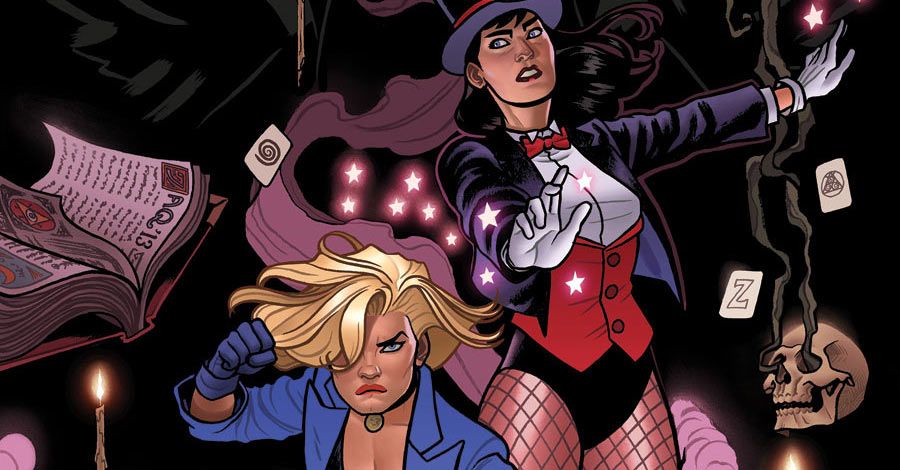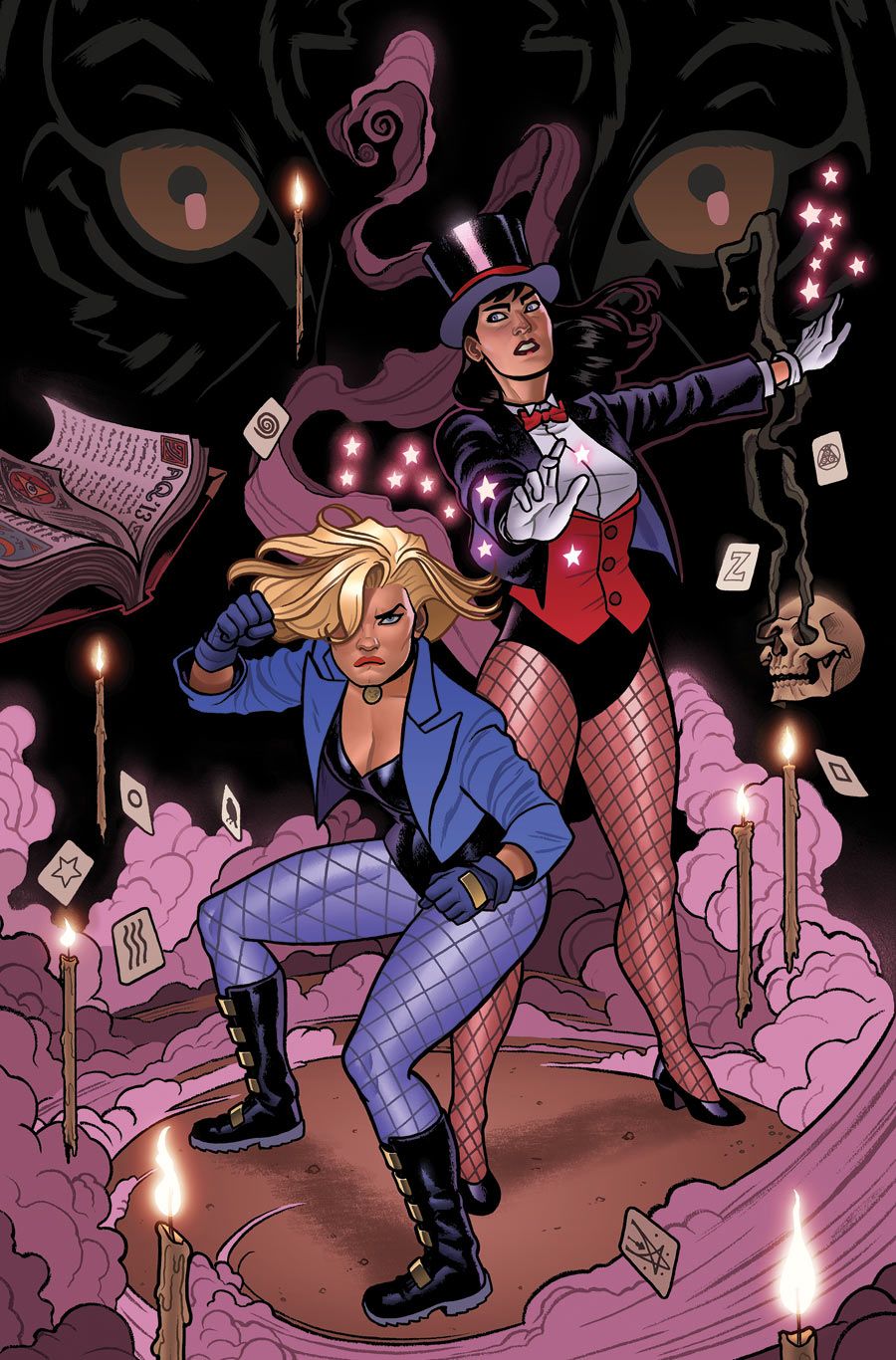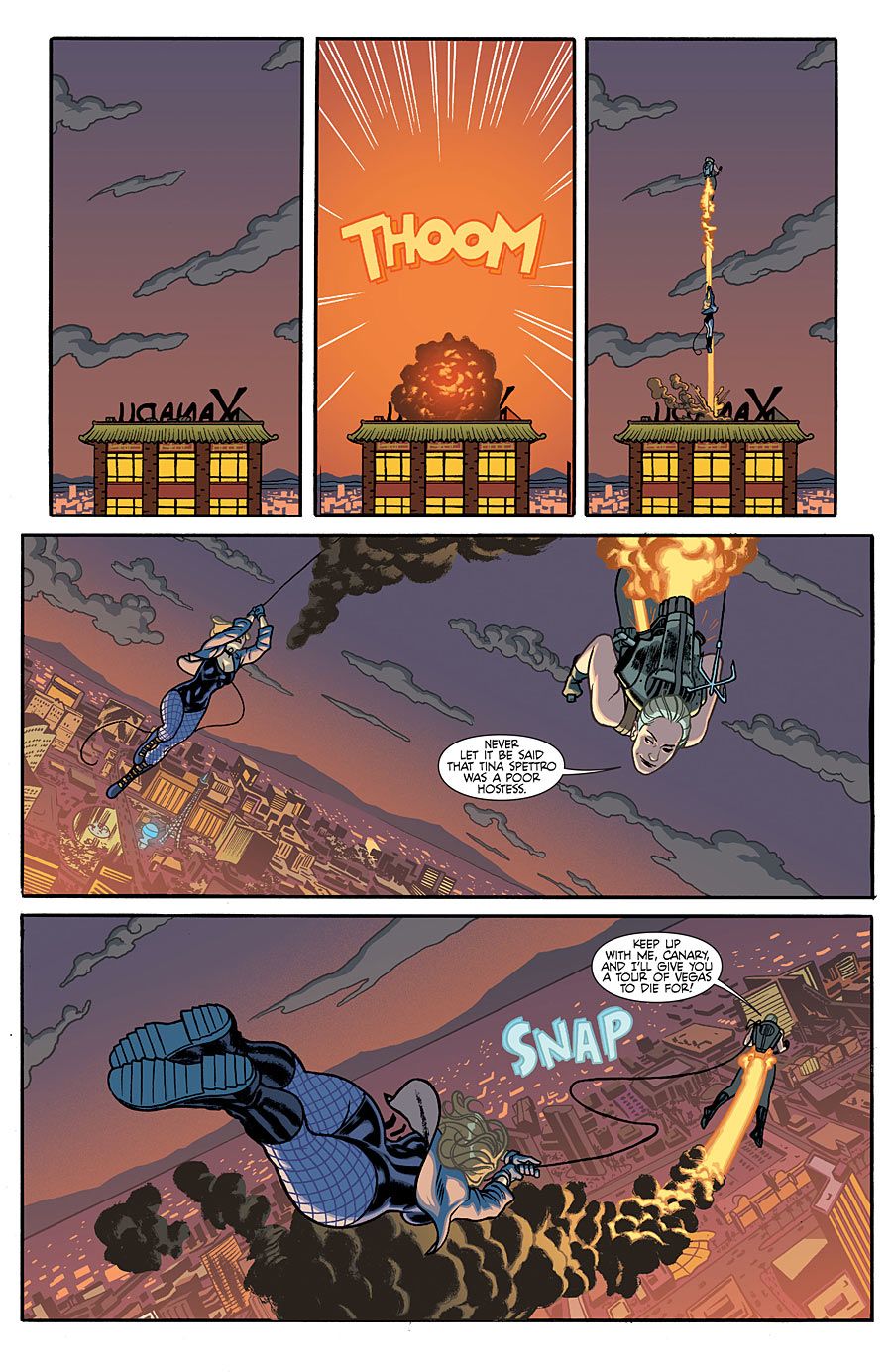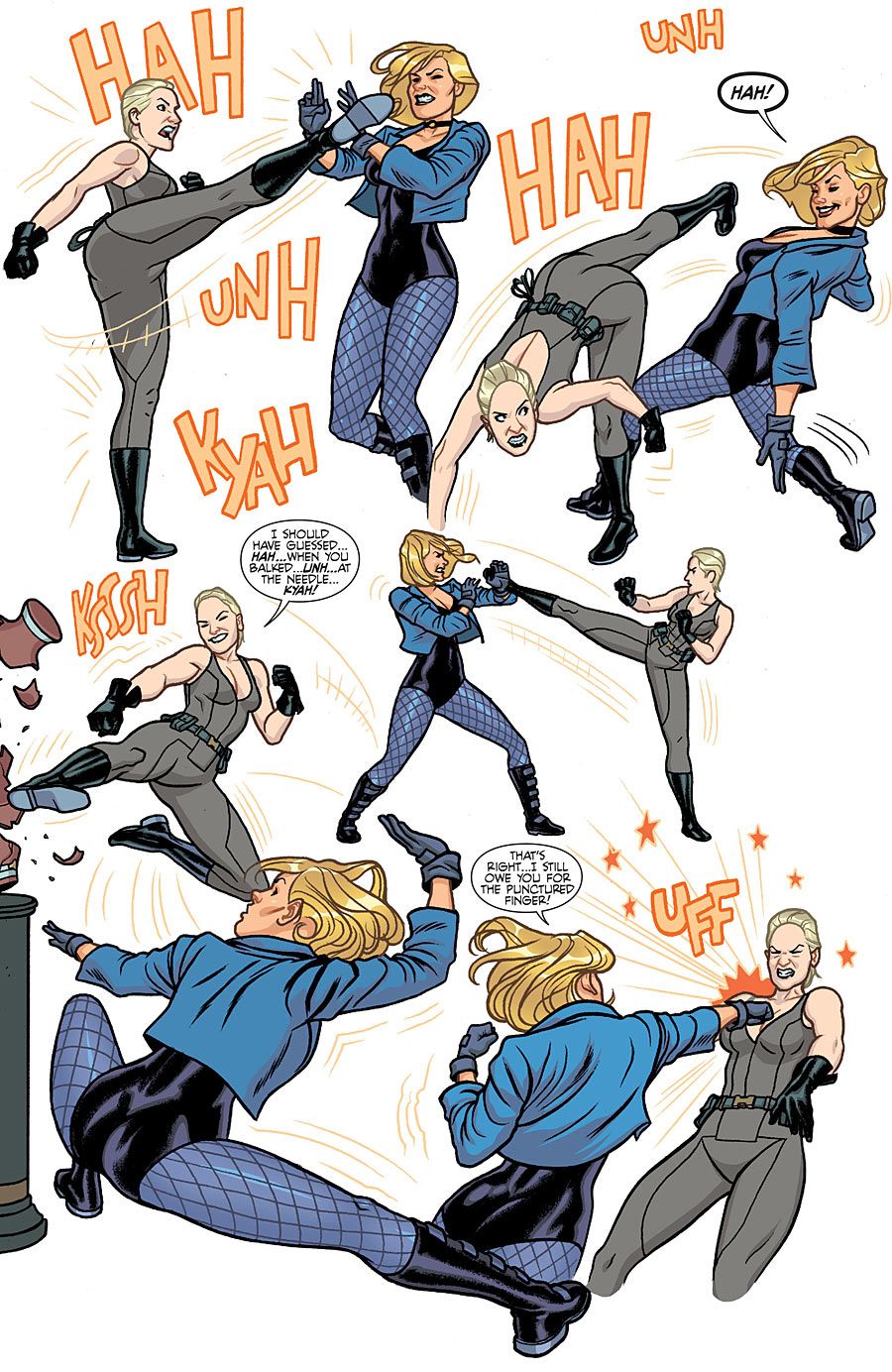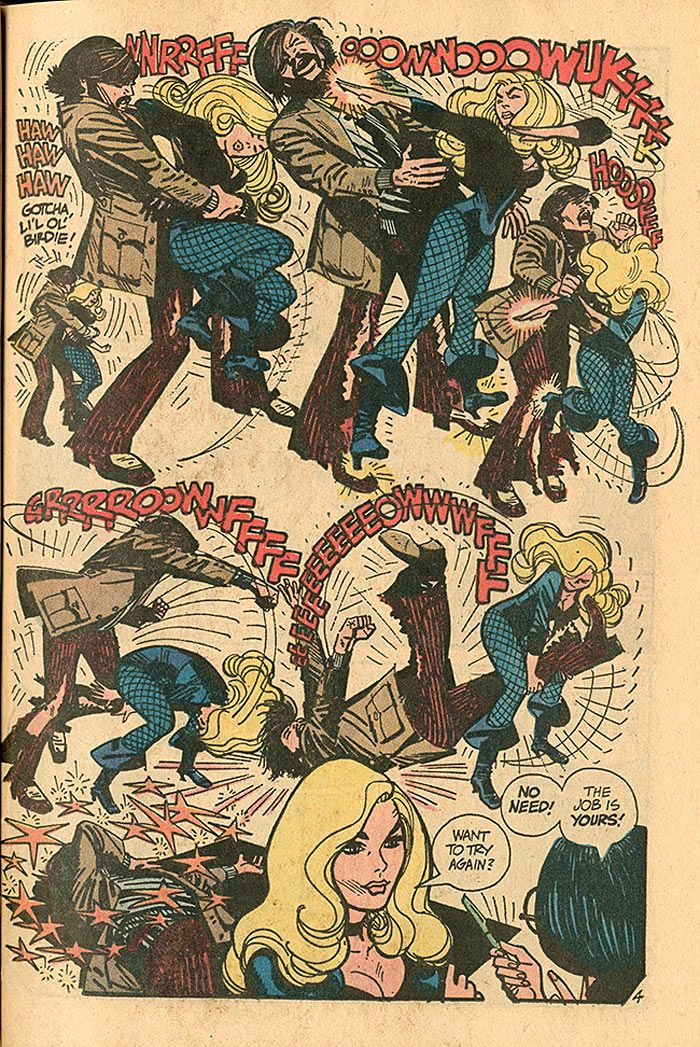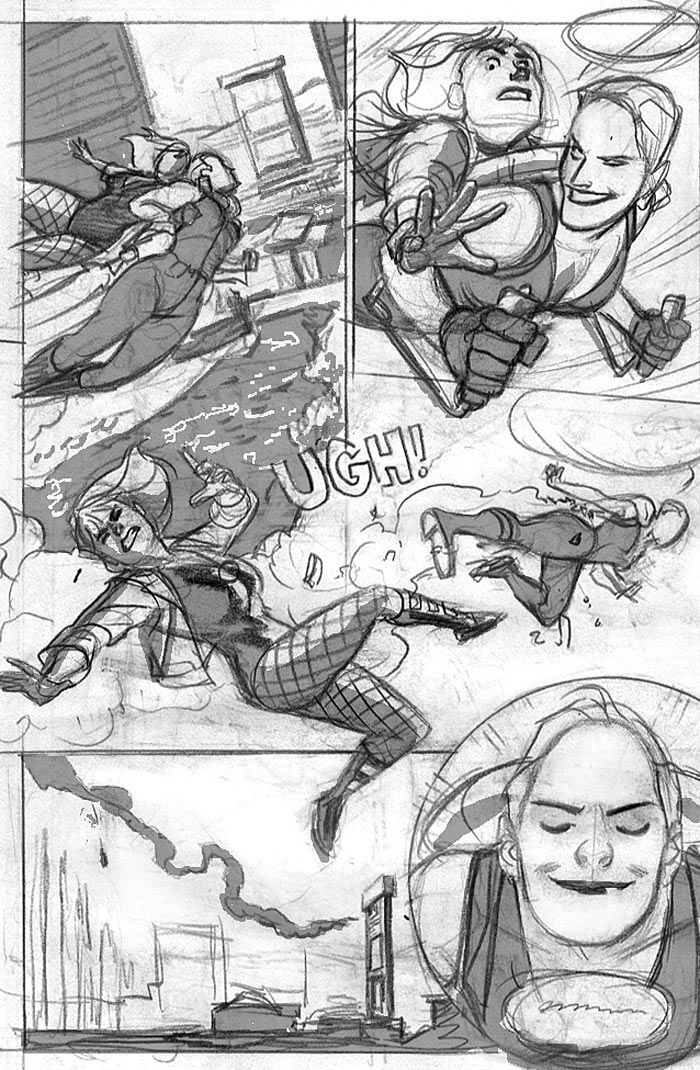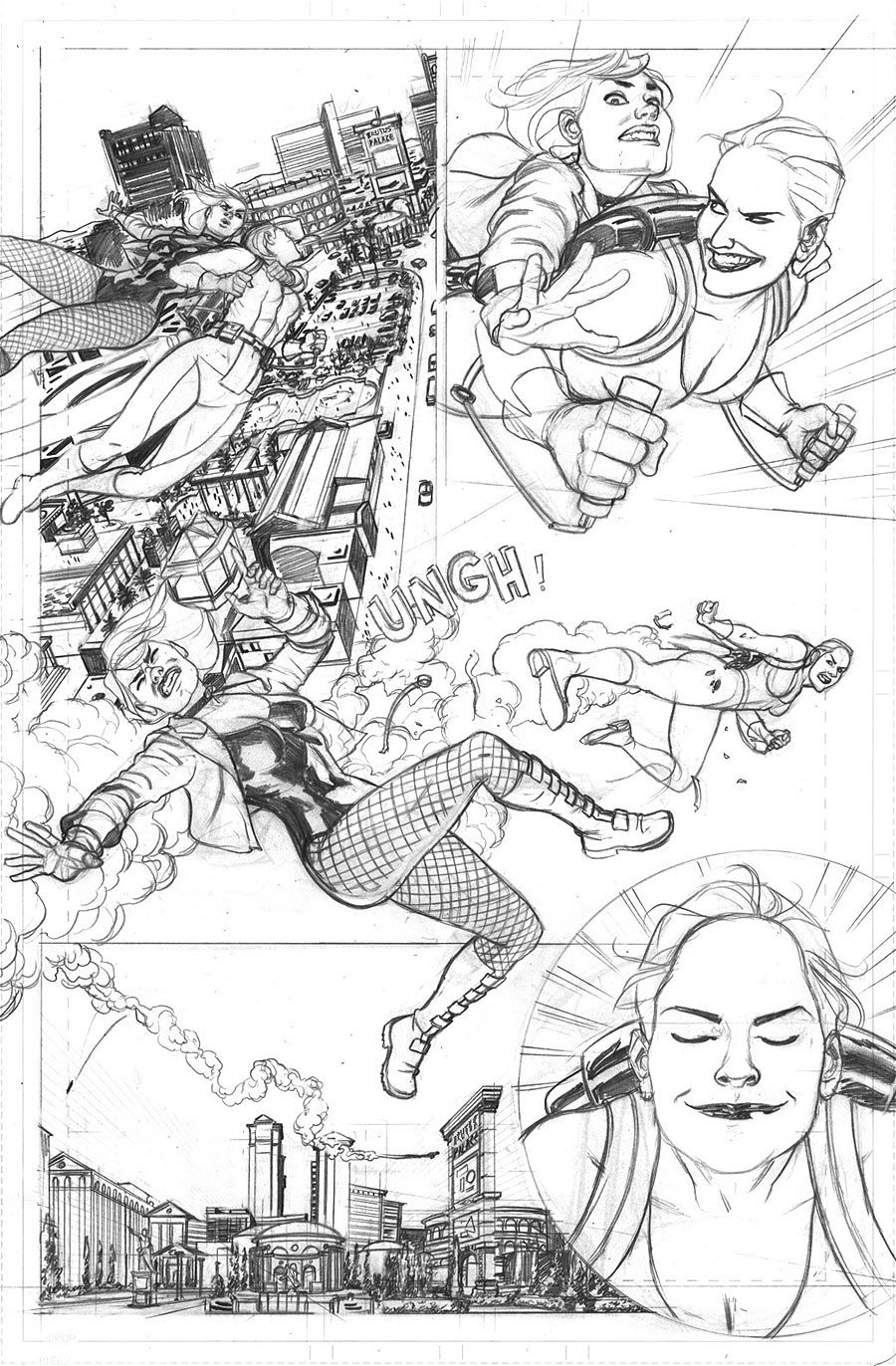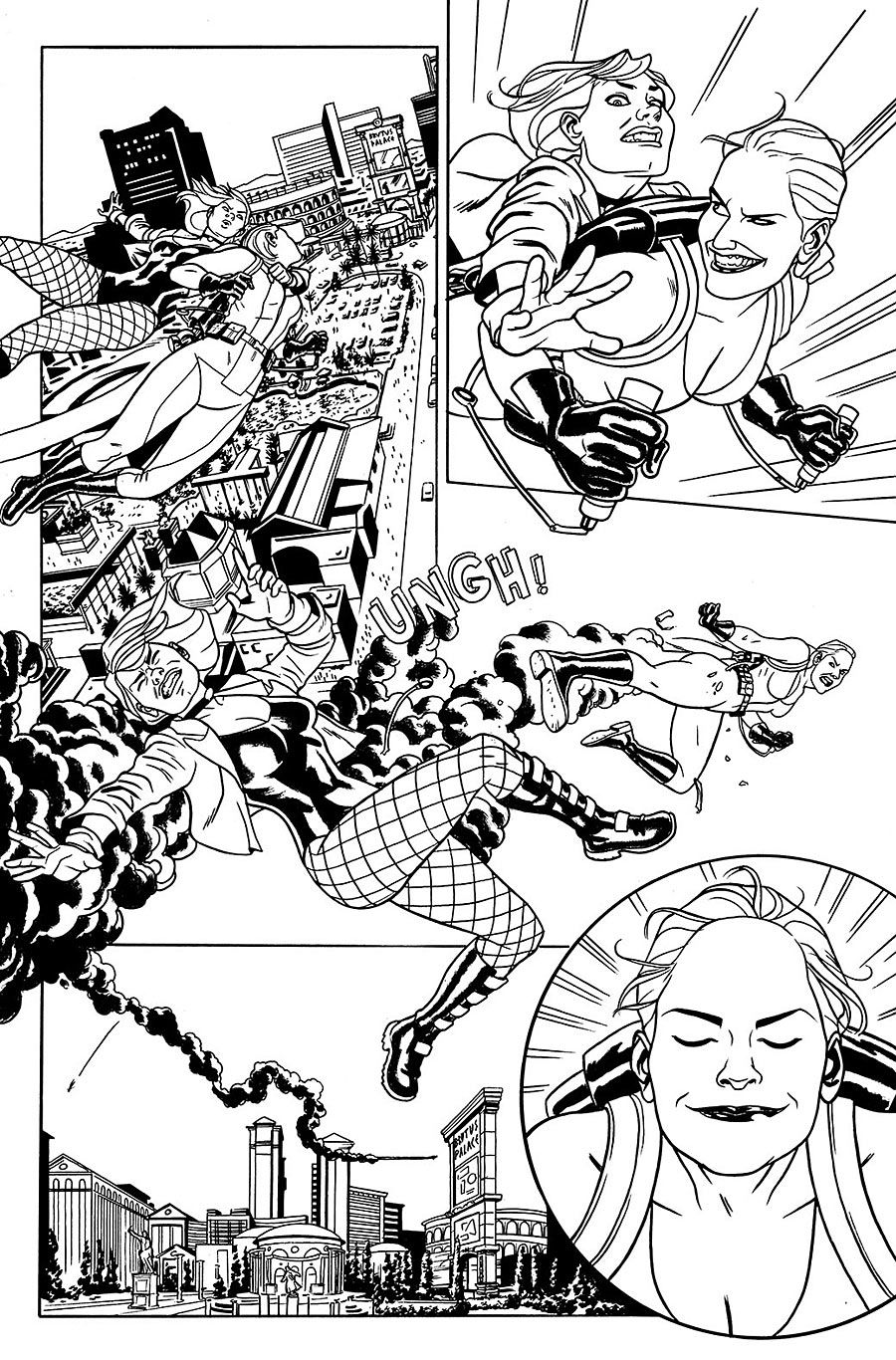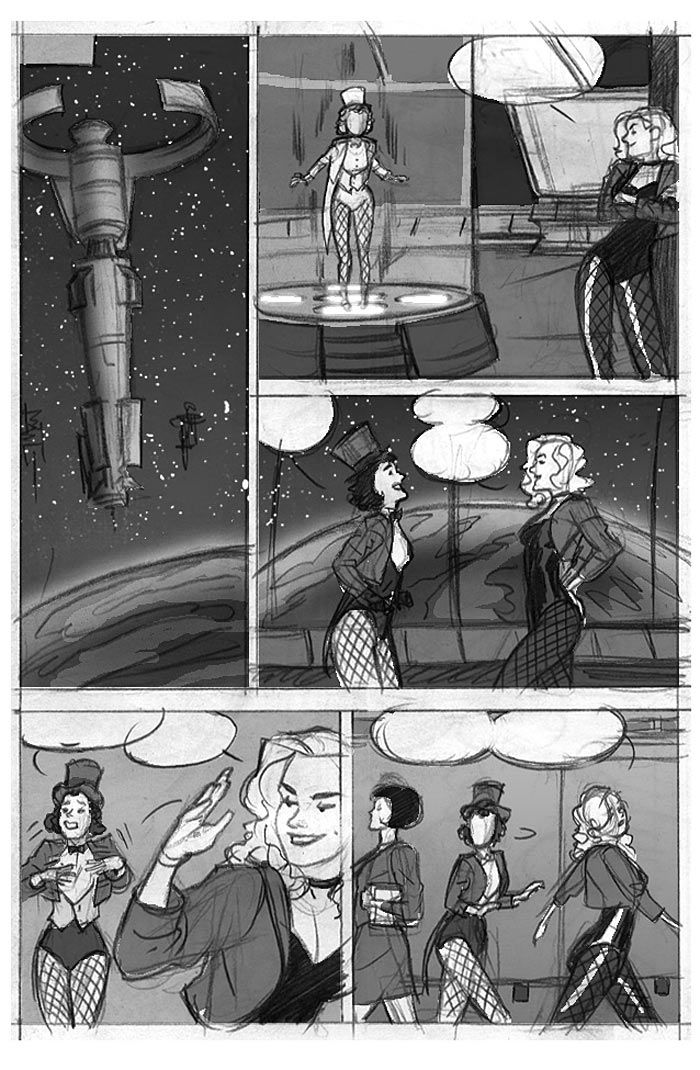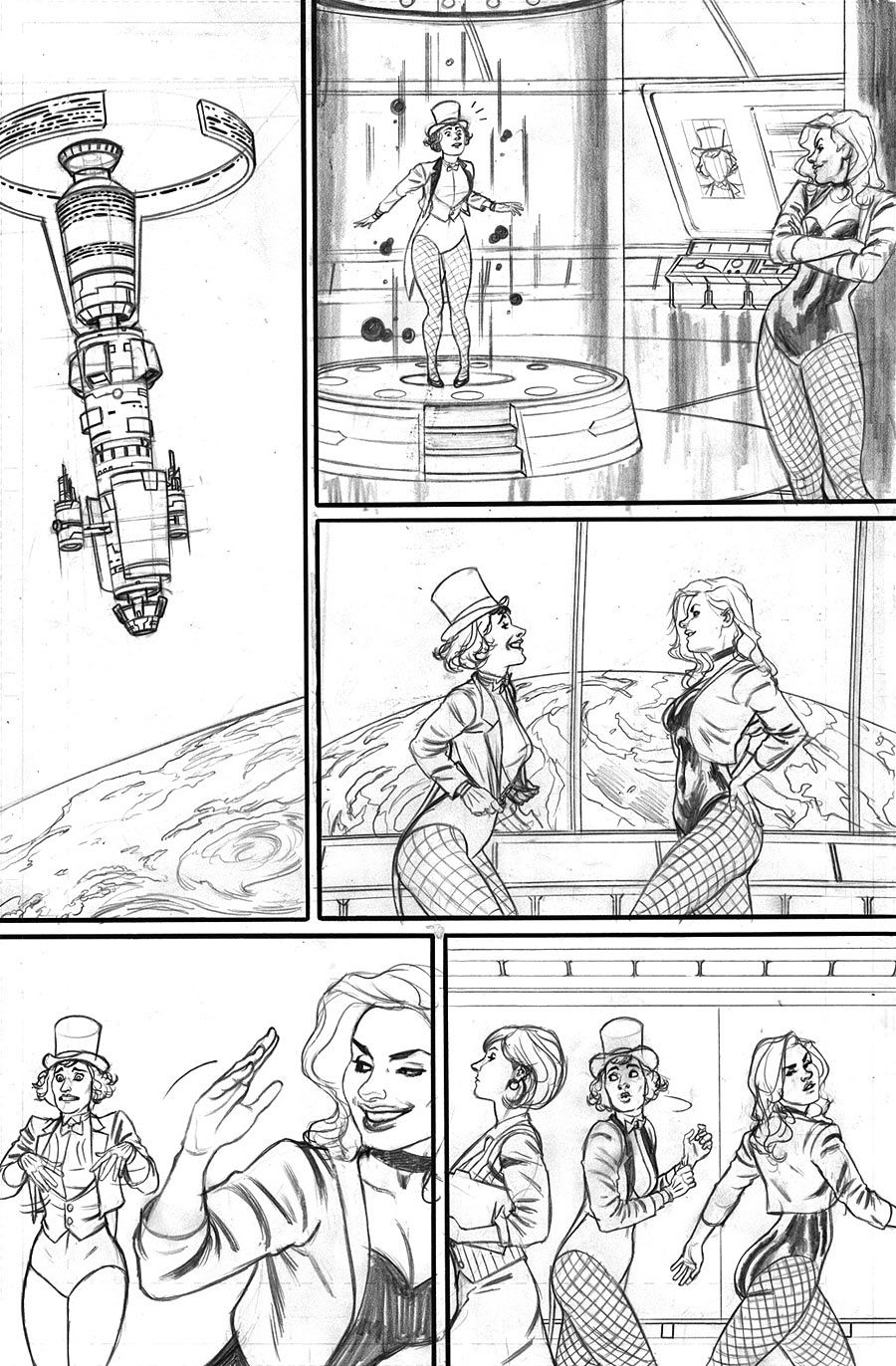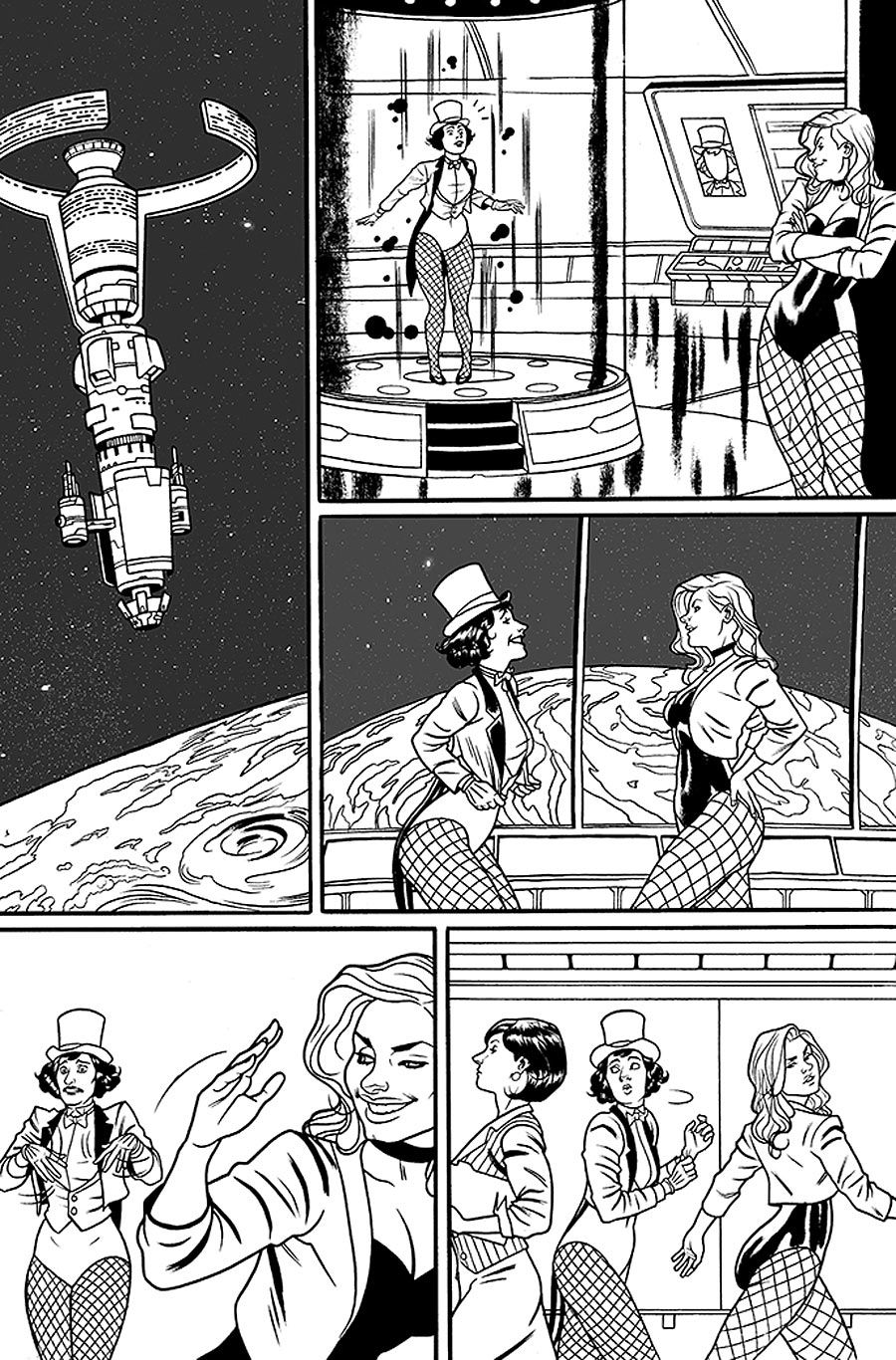While he had worked in comics previously, Joe Quinones truly made a name for himself with 2009's "Wednesday Comics" from DC Comics. His Green Lantern strip written by Kurt Busiek was one of the highlights of an incredible series. Since then, Quinones has showed no signs of slowing down, drawing short stories, fill-in issues and plenty of covers for everything from "Batman '66" to "FF" to "Star Wars" and even "Adventure Time." He also drew the recent Ultimate Universe one-shot "Survive!" from Marvel.
RELATED: Dini Conjures OGN Magic for "Black Canary and Zatanna: Bloodspell"
Quinones' new project is one that's been in the works for several years. For his first full-length graphic novel, Quinones teamed with acclaimed writer Paul Dini on "Black Canary/Zatanna: Bloodspell". First announced by DC back in 2006, long before Quinones was ever involved, DC, the artist was eager to work on the story featuring two fishnet-clad Justice Leaguers and the OGN finally saw release last week from DC. CBR spoke with Quinones about how he got involved in the project, what his collaboration with Dini was like, finding the right tone with his art and the influence of the legendary Alex Toth.
CBR News: Joe, how did you come to work on the book?
Joe Quinones: Following my work on "Wednesday Comics," back in 2009 I was asked if I'd be interested in working on a book about Black Canary and Zatanna, written by Paul Dini. My interest instantly spiked, and I answered in a resounding "yes!"
Besides the opportunity to work with Paul Dini, what attracted you to the project?
Paul was still tweaking the script at the time, (I wouldn't receive a final version for another year -- he's a busy guy!) but I remember the main concept being there of our two heroines engaged in a rollicking supernatural adventure, all the while bumping up against the rest of the DC Universe. It portrayed a plucky yet extraordinarily-skilled Zatanna against the no-nonsense, tough as nails Canary. I loved the dynamic and the sense of swashbuckling fun. It felt like an Indiana Jones tale, but with two female leads. It's something you see too little of in popular culture, especially at the time. I could see the book filling a void where there wasn't (and largely still isn't) stories focusing on strong female protagonists, devoid of dependence (romantic or otherwise) on men. These are important stories to tell for young girls out there and I wanted to help tell that story. Also, I've been a huge fan of Paul's work since my childhood, devouring "Batman: The Animated Series" and later his comics work, so it really was a bit of a dream come true to work with him. He is undeniably one of the people who inspired me to work in this industry in the first place.
Were you a fan of either character before this?
Absolutely! I believe I was first introduced to Zatanna's character (or "Zanna") from her eponymous episode of "Batman: The Animated Series," written by Paul. I fell in love with her character then, and eventually sought her out in comics as well, most recently reading her 2009 then-ongoing series, again written by Mr. Dini, with art by the very talented Stephane Roux.
As for Canary, my first introduction to her was probably in an Alex Toth one-shot I'd tracked down, which featured a story about Dinah. My fandom was cemented however when I saw her appearance in "Batgirl: Year One," then turned up to eleven when I watched her episodes of "Justice League Unlimited."
With so much admiration for the characters and the writer, what was working with Paul Dini on the book actually like?
It was an exceedingly easy and positive experience. At the start, Paul made it clear that his script wasn't set in stone, and that if there were any instances where I thought something should be changed, we could address that together. For instance, he might portray a scene one way in his script, that I might see better visualized a different way. I remember there was one specific page where Paul's script portrayed Dinah witnessing the unfortunate demise of a friend of hers. The script described the moment as a singular splash page, with the action of her death and Canary's somber response all happening simultaneously. I felt that they should be two different beats, adding a panel of the "death" for Canary to then react to in the splash page. Paul agreed and we moved forward from there. Conversely, there were occasions where Paul had suggested condensing panels, or drawing something for a different angle. It's a great way to work, making the process all very fluid. Comics are often a collaboration, and Paul fully appreciates this, being very giving and thoughtful throughout the process of "Bloodspell."
RELATED: Dini & Quinones' "Black Canary and Zatanna" Graphic Novel Solicited for May 2014
The process of putting together a graphic novel as opposed to short comics or single issues is a different beast. Was it a big change for you in terms of approach?
It is certainly a different animal than working on sequential single issues. With single issue comics, I find the process a bit more fevered, working against a hard, set deadline, whether it be three weeks or six weeks. You're working to get the pages out the door primarily, while trying to tell as good a story as possible as you go. It's a high-wire act that is fueled by that immediate demand.
Working on "Bloodspell" was a very different experience as there was no set deadline on the book, and so everything really stretched out. I got Paul's script a year after signing on to the project, then basically laid out the book over the next year, planning it out in between other, immediately due comics work. In 2011, I ended up taking six months off from "Bloodspell" and most everything, as I dealt with a health emergency in my family. Sometimes I got too busy with work and progress stalled. Sometimes my editor got too busy and things stalled on that end. It kind of incrementally marched along until I finished drawing the book in 2012. It was then in my editor's hands until I got approval to ink the book. He had a ton on his plate, and again there was not a publishing schedule set for the book yet, so it was another 5 months before he could finally get to reading through my pencils, then giving me the go-ahead on inks. All that said, Joey Cavalieri, who was the editor on this book, was really amazing to work for. He was always kind and considerate and though he constantly had too much on his plate, was never too busy to chat about the book over the phone. He's a sweetheart, and I'm so glad we got to work together on "Bloodspell" and see it through to completion.
Anyhow, were I ever to work on another self-contained OGN, while I wouldn't want the project to stretch out anywhere near as long as this one did, I did enjoy being able to design and tell a single contained story, unbroken from the sequential 'issue' format. It was nice to be able to consider and design the book as a whole, rather than twenty pages at a time.
Black Canary has been drawn by all kinds of people from Carmine Infantino, who co-created the character, to Alex Toth to Trevor Von Eeden and plenty of others. Is there any interpretation -- besides your own -- that you're a particular fan of?
I'm going to go with Toth, whom I also mentioned above. His depiction of Canary in "Adventure Comics" #418 and #419 was a huge inspiration. His storytelling is so clear and vibrant, his line work economical, yet beautifully descriptive. Toth's pages are deceptively simple, with a lot of intelligence in design working beneath the surface -- a method I tried to echo in this book. There's even a page in "Bloodspell" directly homaging one of Toth's pages from that "Adventure Comics" story. He was a master.
What was the biggest technical challenge for you on the book?
The biggest (and most fun) challenge of any book is designing the story flow-through of it in its "layouts" phase. This is where I'm deciding how to crop this image or that. How this panel will flow into the other, how this page will lead into the next, echoing a panel layout here, building off of another there, and so on and so on. It takes the least amount of time of any stage of comics, but is easily the most important in my book.
As far as technical challenges, I did play around drawing and inking the book a few different ways here. At first I simply transcribed my layouts to finished pencils, just by eyeballing what I had drawn in layouts. Then I began printing out my layouts, and lightboxing my pencils atop them. Eventually I purchased a large format (11"x17") printer, which allowed me to blow up and print out my layouts in blue line. I would then pencil atop those printouts. This is how I completed pencilling the book. However, when it came time to ink those pages, I found them to be a bit messy with the blue printed line and graphite drawing over top, so I again looked to my printer. I digitally isolated the graphite drawing on each page, converted them to a faint cyan color, then printed those out to ink over. It was a lot of bristol to go through, but it made it easier for me to see each page, and skipped over the "erasing" stage.
Do you have a favorite scene in the book?
For me it's a toss up between two scenes: one which happens early on in the book, depicting a fevered, rocket pack fly through of Las Vegas with Canary and the villain of the story. I love the dynamics of that whole sequence, and it was especially fun to draw. The other scene is the finale action sequence featuring the book's villain and both Zatanna and Canary. No spoilers of course, but I really enjoy how Paul wrote this scene and the ways in which the characters bounce off one another (sometimes literally).
ROLL CALL: Eight Heroes Who Would Make the "Justice League" Movie Great
I wanted to ask about the tone of the book. It's a fairly light-hearted book as things go -- especially in the context of superhero comics today. How important is tone to the designs and artistic choices that you make?
The story does deal with darkness and death, but there is a pervading sense of fun throughout. This book is a celebration primarily of Canary and of Zatanna, of the DC Universe and the bonds of friendship. It's an exercise in positivity, which is something I inherently try to tap into in my own work. Comics to me are for everyone. My favorites are bright, exciting and fun, and don't take themselves too seriously. It's something I try to impart in my own work, and I think why I was so taken with Paul's script for the book. Acknowledge the dark, but live in the light. That sounds kinda religious, but I think there's truth in it. And we all get by with a little help from our friends. (That sounds kinda like a song.)
Talk a little about working with Dave McCaig and the coloring on the book.
I personally asked Dave to come on the book back in 2012, wanting to find someone whose work would gel well with my own. I was looking for a colorist whose work I admired and whom I though would make for a good fit in the world Paul and I crafted. Thankfully Dave seemed up for it. He was gracious enough to do a try-out page or two, which I then sent along to our editor Joey, who agreed he'd be stellar on the book. Dave did a great job.
I have to ask, are you tired of drawing fishnets constantly?
Not at all! I LOVE THESE CHARACTERS. More please!
"Black Canary and Zatanna: Bloodspell" is on sale now from DC Comics.

